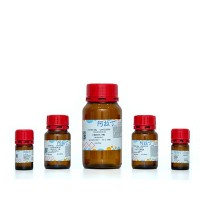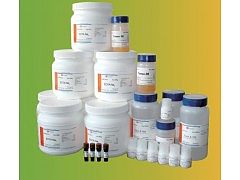Models of Inflammation: Carrageenan Air Pouch
互联网
- Abstract
- Table of Contents
- Materials
- Figures
- Literature Cited
Abstract
The subcutaneous air pouch is an in vivo model that can be used to study acute and chronic inflammation, the resolution of the inflammatory response, and the oxidative stress response. Injection of irritants into an air pouch in rats or mice induces an inflammatory response that can be quantified by the volume of exudate produced, the infiltration of cells, and the release of inflammatory mediators. The model presented in this unit has been extensively used to identify potential anti?inflammatory drugs. Curr. Protoc. Pharmacol. 56:5.6.1?5.6.8. © 2012 by John Wiley & Sons, Inc.
Keywords: inflammation; edema; carrageenan; air pouch; animal model; inflammatory mediator; PGE2; TNF alpha
Table of Contents
- Introduction
- Basic Protocol 1: Air Pouch Model in the Rat
- Alternate Protocol 1: Air Pouch Model in the Mouse
- Reagents and Solutions
- Commentary
- Literature Cited
- Figures
- Tables
Materials
Basic Protocol 1: Air Pouch Model in the Rat
Materials
|
Figures
-

Figure 5.6.1 Analysis of cellular infiltrate in rat air pouch exudates after carrageenan stimulation. Data for each time point represent (A ) mean number of cells and (B ) percent of total cells for each of four cell types in a group of eight rats for each time point. Data at 0 hr are for untreated animals. View Image -

Figure 5.6.2 Amounts of tumor necrosis factor α (TNF‐α) and prostaglandin E2 (PGE2 ) present in rat air pouch exudates 3 hr after carrageenan stimulation. Symbols: filled diamond, ng/ml TNF‐α or PGE2 detected for each rat in the experimental group; horizontal line, median level of production for the experimental group. Exudates from unstimulated air pouches contained no detectable levels of TNF‐α or PGE2 . Note the extent of variation among the individuals in both groups. View Image
Videos
Literature Cited
| Literature Cited | |
| Ariel, A. and Serhan, C.N. 2007. Resolvins ad protectins in the termination program of acute inflammation. Trends Immunol. 28:176–183. | |
| Donovan, J. and Brown, P. 2006. Euthanasia. Curr. Protoc. Immunol. 73:1.8.1‐1.8.4. | |
| Edwards, J.C.W., Sedgwick, A.D., and Willoughby, D.A. 1981. The formation of a structure with the features of synovial lining by subcutaneous injection of air: An in vivo tissue culture system. J. Pathol. 134:147–153. | |
| Jain, M. and Parmar, H.S. 2011. Evaluation of antioxidative and anti‐inflammatory potential of hesperidin and naringin on the rat air pouch model of inflammation. Inflamm. Res. 60:483–491. | |
| Martin, S.W., Stevens, A.J., Brennan, B.S., Davies, D., Rowland, M., and Houston, J.B. 1994. The six‐day‐old rat air pouch model of inflammation: characterization of the inflammatory response to carrageenan. J. Pharmacol. Toxicol. Methods 32:139–147. | |
| Masferrer, J.L., Zweifel, B.S., Manning, P.T., Hauser, S.D., Leahy, K.M., Smith, W.G., Isakson, P.C., and Seibert, K. 1994. Selective inhibition of inducible cyclooxygenase 2 in vivo is antiiflammatory and nonulcerogenic. Proc. Natl. Acad. Sci. U.S.A. 91:3228‐3232. | |
| Romano, M., Faggioni, R., Sironi, M., Sacco, S., Echtenacher, B., Di Santo, E., Salmona, M., and Ghezzi, P. 1997. Carrageenan‐induced acute inflammation in the mouse air pouch synovial model. Role of tumour necrosis factor. Mediators Inflamm. 6:32‐38. | |
| Sedgwick, A.D. and Lees, P. 1986. A comparison of air pouch, sponge and pleurisy models of acute carrageenan inflammation in the rat. Agents Actions 18:439‐446. | |
| Sedgwick, A.D., Koh, M.S., Willoughby, D.A., and Pelletier, M. 1981. Effects of sera and exudate from carrageenan‐treated rats on two models of acute inflammation. Agents Actions 11:477–481. | |
| Selye, H. 1953. On the mechanism through which hydrocortisone affects the resistance of tissue to injury. J. Am. Med. Assoc. 152:1207‐1213. | |
| Serhan, C.N., Krishnamoorthy, S., Recchiuti, A., and Chiang, N. 2011. Novel anti‐inflammatory–pro‐resolving mediators and their receptors. Curr. Top. Med. Chem. 11:629–647. | |
| Sin, Y.M., Sedgwick, A.D., Chea, E.P., and Willoughby, D.A. 1986. Mast cells in newly formed lining tissue during acute inflammation: a six day air pouch model in the mouse. Ann. Rheumatic Dis. 45:873–877. | |
| Vane, J.R., Mitchell, J.A., Appleton, I., Tomlinson, A., Bishop‐Bailey, D., Croxtall, J., and Willoughby, D.A. 1994. Inducible isoforms of cyclooxygenase and nitric‐oxide synthase in inflammation. Proc. Natl. Acad. Sci. U.S.A. 91:2046–2050. |






